Changelog
A detailed log of all the updates and improvements we've made to Dynomate.
1.8.0
A quick fix for our Linux users. Opening the download folder after a full table export works properly now.
Fixed Download Folder Access on Linux
If you're on Linux, clicking "Open folder" after completing a full table export wasn't working because of a permissions issue. We've fixed that. Your exports are saved to ~/.local/share/Dynomate/exports and you can now actually open that folder when you need to.
1.6.0
Full Table Export is the star of this release. Export your entire DynamoDB table in the background—no scripts, no waiting around. Plus, we've added complete AWS region coverage with a redesigned region picker that groups by geography.
Full Table Export
Exporting an entire DynamoDB table used to mean writing scripts or waiting around. Not anymore. Kick off a full-table export right from the table view. Choose JSON Lines or CSV, hit "Start export," and Dynomate processes everything in the background while you keep working.
Your export history sticks around even if you close the app mid-export, so you can reopen Dynomate later and pick up exactly where you left off. Each export shows clear progress, and when it's done, you get a one-click shortcut straight to the file.
Need more control? Pop open the "Advanced options" drawer to fine-tune parallel workers or scan page size. The defaults work great, but the knobs are there when you want them.
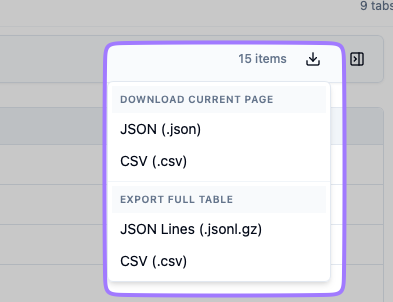
Complete AWS Region Coverage
Every AWS region is now supported. Whether your data lives in a brand new region or one of the specialty regions, you can connect to it.
Geographic Region Grouping
Finding your region in a long dropdown was annoying, so we fixed it. The region picker now groups regions by geography (US, Europe, Asia Pacific, etc.), making it way faster to find what you're looking for. Less scrolling, more working.
Persistent Profile History
Your profiles now stick around even when you haven't used them in a while. This means your sidebar stays familiar and you can jump back into any account without having to re-add your connection details. It's a small thing that makes a big difference in your daily workflow.
1.5.0
We're shipping Linux support and a highly requested feature: data exports. No more copying from the JSON view—you can now export your filtered table data with a single click.
Linux Support
Dynomate now runs natively on Linux. Same full-featured desktop experience you've been using on macOS and Windows. No compromises, no workarounds. Just download and run.
Export to JSON & CSV
Export your current table view (with all your filters and visible columns) as JSON or CSV. Files land in your downloads folder with clean, sensible names. Whether you're exporting 100 rows or 10,000, the data comes through clean and formatted correctly.
Export Row Count Display
The action panel now shows your current row count, so you know exactly how many records you're about to download before you hit export.
1.4.0
We're shipping some fantastic developer experience improvements in this release. These changes came directly from your feedback, and we're confident they'll significantly improve your DynamoDB workflow.
Adjustable Columns
You can now resize individual column widths when viewing tables, because sometimes that partition key doesn't need half your screen.
Attribute Filtering in Scan & Query
Attribute filtering now works in both scan and query views, so narrowing results feels fast and intuitive.
Index Scanning
You can now scan on secondary indexes by picking the index directly in the scan view—Dynomate takes care of the rest.
Column Sorting
Columns are now sortable in ascending or descending order, giving you control over how results are organized.
Inline Array Edits
Editing arrays no longer triggers confusing errors, so you can update complex attributes without worry.
Loading Spinner Accuracy
The title-bar loading spinner now appears only when work is happening, so its status finally matches reality.
Table Refresh After SSO Login
The table view refreshes automatically once SSO completes, eliminating the need for manual reloads to see your data.
1.3.0
This release addresses two important fixes: MFA input visibility in dark mode and proper type handling for numeric query comparisons. Both improvements focus on removing friction from common DynamoDB operations.
MFA inputs now visible in dark mode
Multi-factor authentication input fields were effectively invisible in dark mode due to insufficient contrast. We've corrected the theme implementation to ensure the inputs maintain proper visibility across all color schemes.
Fixed numeric comparisons in queries
Query operations using comparison operators (>, <, >=, <=) on numeric sort keys were failing with type validation errors. The issue stemmed from the query builder sending numeric values as strings.
We now detect numeric attributes from your table schema and automatically apply the correct type conversion. This means queries like price > 100 work as expected.
1.2.0
A significant update to how Dynomate manages request collections, introducing explicit marker files and native OS integration. We've also addressed critical stability issues that could result in data loss during save operations.
Collection marker files for better organization
Collections now use collection.toml files as explicit markers, instead of being detected based on directory contents. This approach eliminates the ambiguity of heuristic-based detection where any sub-directory within a watched directory might be mistaken for a collection.
Your collections can now live alongside project code without interference, and existing collections are automatically upgraded on first access.
Reveal collections in file explorer
New context menu option to open collection folders directly in your system's file explorer. This native integration makes it easier to manage files with external tools, or integrate collections with version control workflows.
Fixed request saving crashes
Resolved a critical issue where saving requests before creating a collection could cause the entire UI to crash.
Enhanced error handling architecture
We've Implemented hierarchical error boundaries throughout the application for better fault isolation. When errors occur, they're now contained to specific components rather than crashing the entire interface.
You'll see more helpful error messages with clear recovery actions, and the application maintains stability even when individual operations fail.
1.1.0
Ever found yourself copying attribute values from the table view, switching to query mode, and manually pasting them in? Yeah, me too. That's why we built this.
One-click query from the context menu
Right-click any row and instantly query related items. No more copy-paste gymnastics!
The new "Query with..." option is schema-aware – it knows your table structure and offers intelligent query options based on your keys and indexes.
For simple tables (primary key only):
Select a user row → Query with Primary Key → boom, all items with that userId.
For composite keys:
Got an Orders table with customerId + orderDate? Right-click gives you:
- Query by customerId (find all customer orders)
- Query by full key (find this exact order)
Tables with indexes? We got you:
Each GSI and LSI appears as a query option. Click it, and Dynomate switches to query mode with all the values pre-filled.
This is one of those features that seems small but saves tons of time when you're debugging production issues at 2am.
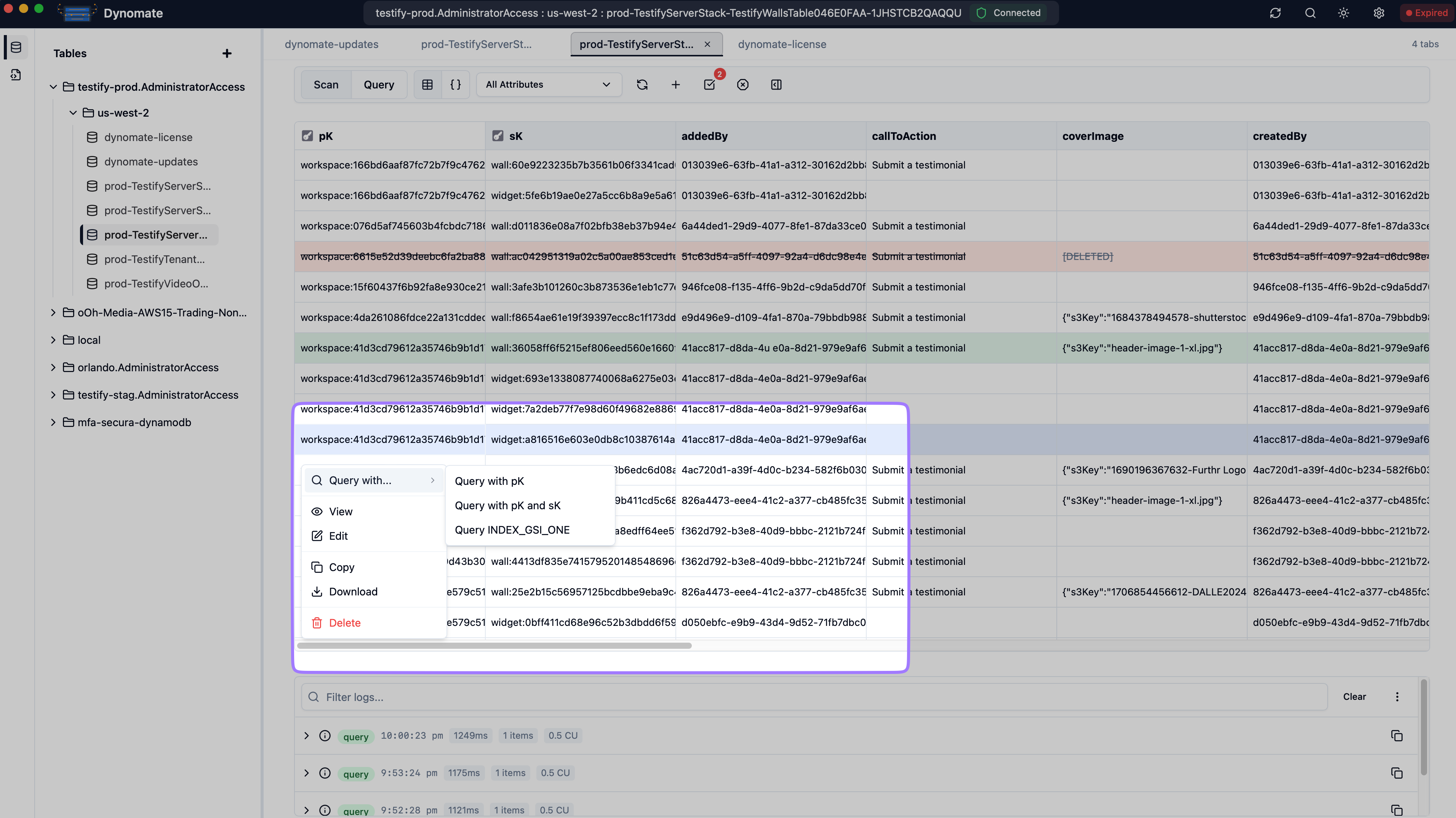
1.0.0
🎉 First stable release!
This update introduces a streamlined action bar, an attribute selector for tailored views, and expanded AWS
profile support (SSO sessions & cross-account roles). It also fixes a long-standing issue with profiles defined
in the credentials file not being detected.
Streamlined action bar for table view
All common table operations (query, scan, add, delete, etc.) are now grouped into a single
contextual action bar, reducing clicks and speeding up everyday workflows.
Attribute selector for table / JSON view
Pick exactly which attributes you want to see in the grid or JSON panel.
Great for wide tables – hide the noise and focus on what matters.
Support for SSO profiles using `sso_session`
Connect with AWS SSO profiles that share their configuration via sso_session.
No extra setup required – just select the profile and go.
Support for `source_profile` & `role_arn`
You can now assume roles via the standard source_profile + role_arn parameters, enabling seamless
cross-account workflows.
Credentials file profiles now respected
Fixed an issue where profiles defined in ~/.aws/credentials were ignored.
All profiles are now correctly detected and listed.
0.22.0
The table view has been redesigned to make it much more performant for larger datasets, and introduced a new inline editing feature for easy attribute updates.
Table inline edits.
Improved editing experience for the table.
Now you can edit inline.
Inline edits are staged and can be reviewed before updating. Updates use dynamodb transactions.
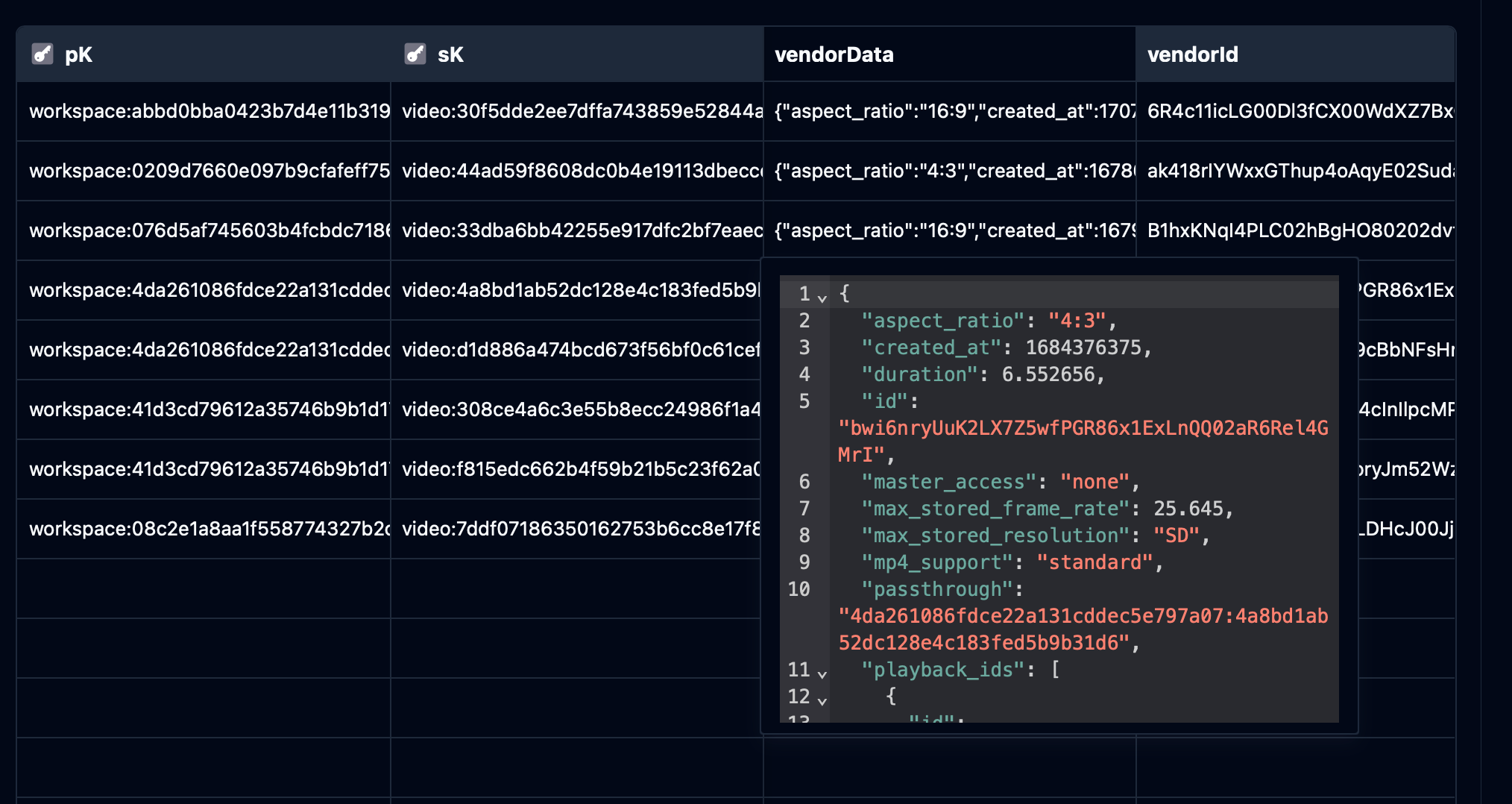
Added a table context menu.
The new context menu allows copy, download, and delete options in the table view. It can be activated wih a right click on any cell in the table.
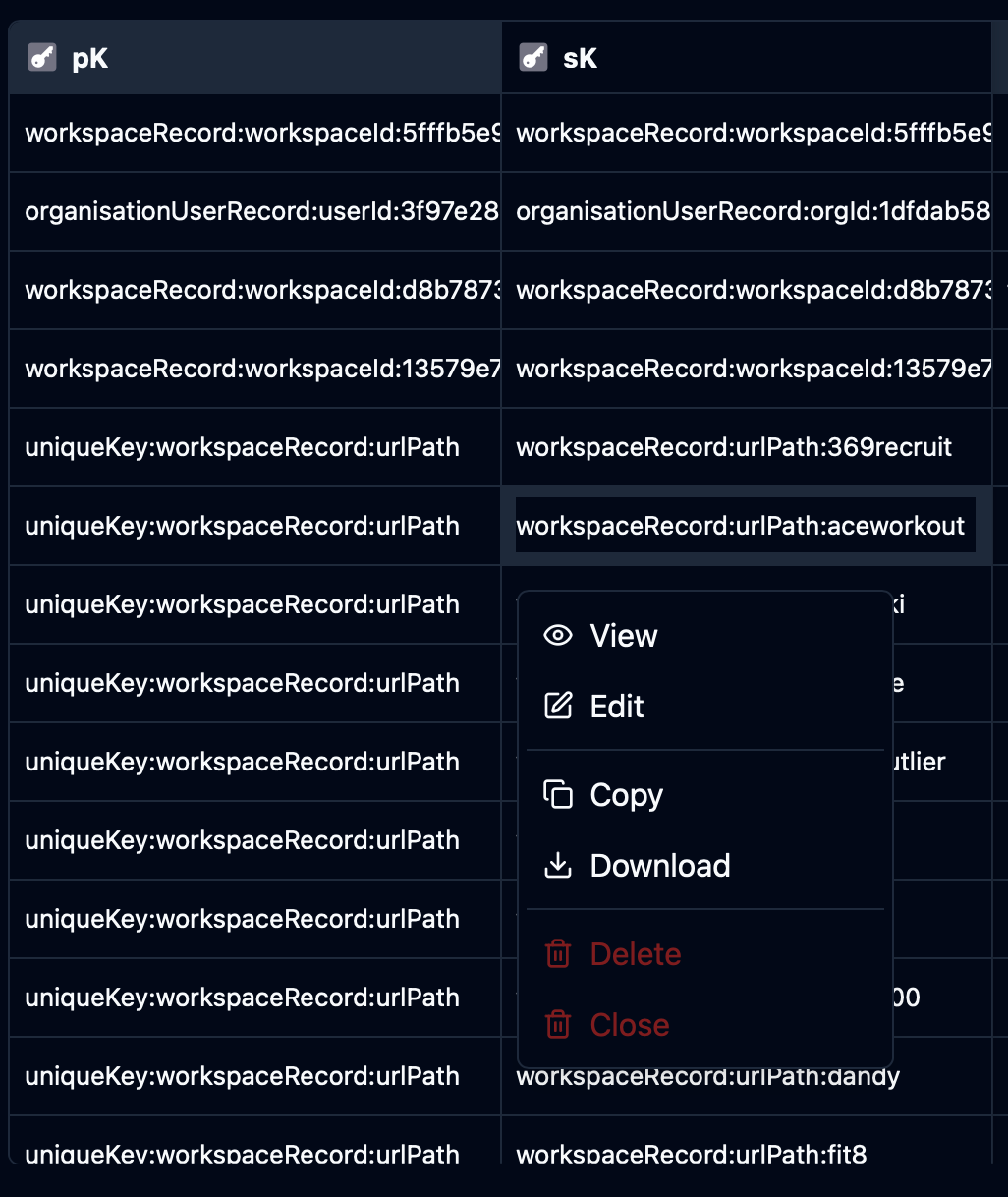
Fixed an issue where the JSON editor renders JSON values as strings.
0.17.0
🎉 First public preview of Dynomate – the fast Git-friendly DynamoDB GUI Client.
Table Discovery & Profile-aware Connections
Detects tables across multiple AWS profiles/SAML SSO accounts
and lets you choose regions before importing.
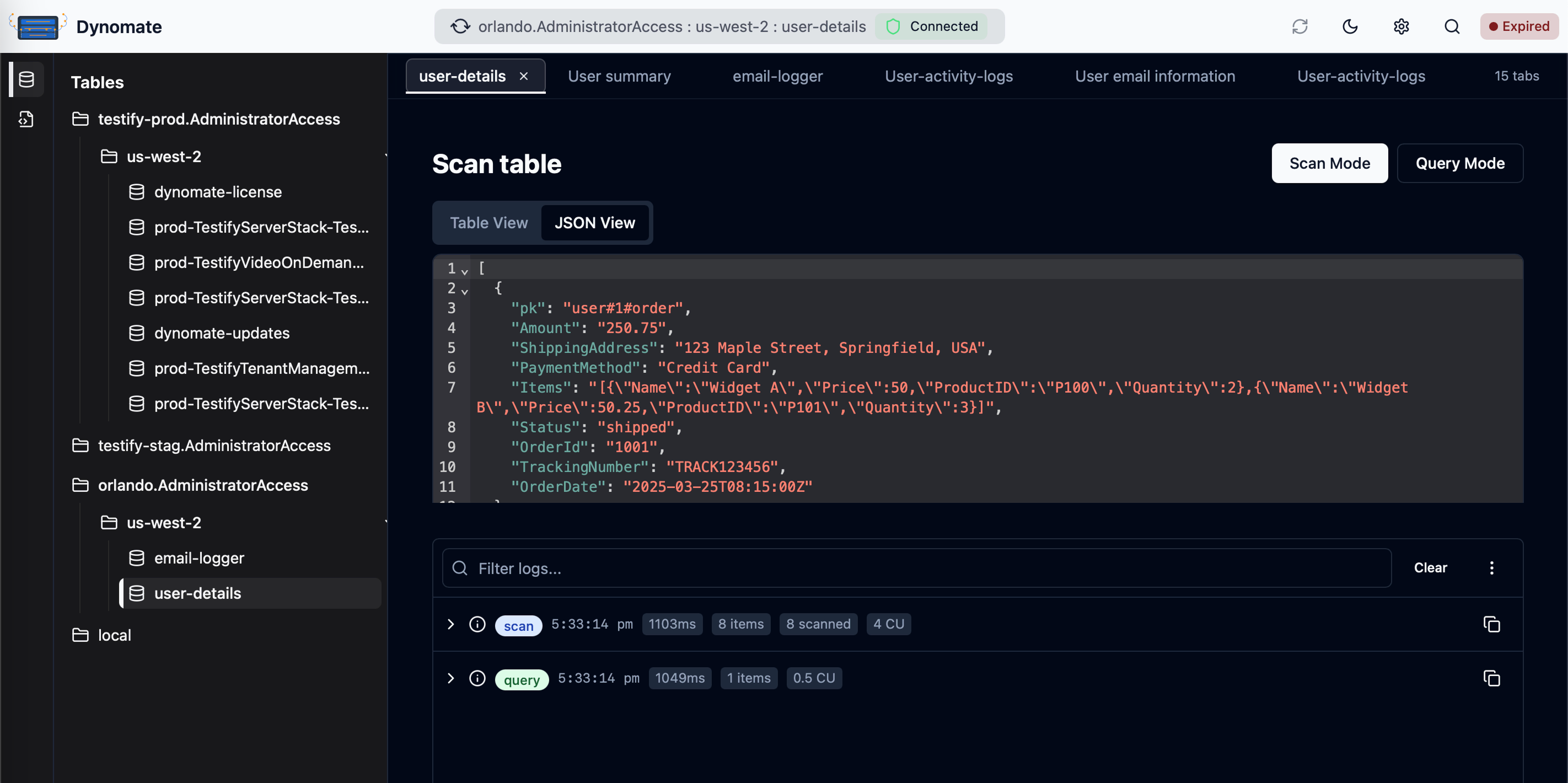
Tab-based multi-table workspace
Each table opens in its own tab with independent connection
state, so you can hop between accounts or regions instantly.
Adaptive Query / Scan UI
Forms adjust to your table’s composite keys and indexes, with
JSON view, inline search (⌘/Ctrl-F) and quick add/edit.
Multi-operation Request Chains
Combine query, put, update or delete steps; reference previous
outputs (${step1.items[0].email}) to build powerful
workflows.
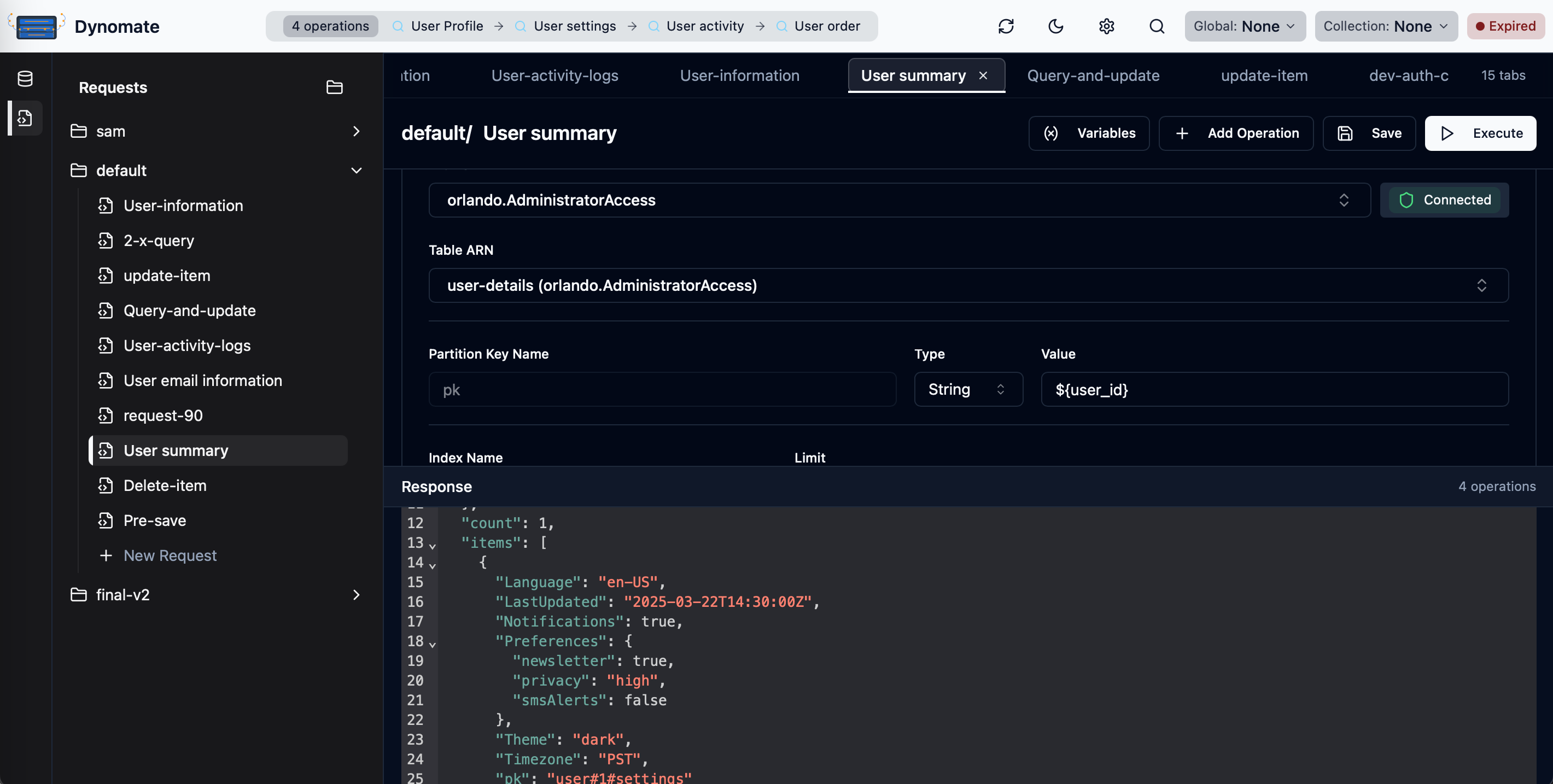
Variable & Environment System
Define variables globally, per collection or per request; switch
environments (prod, staging, etc.) with one click.
